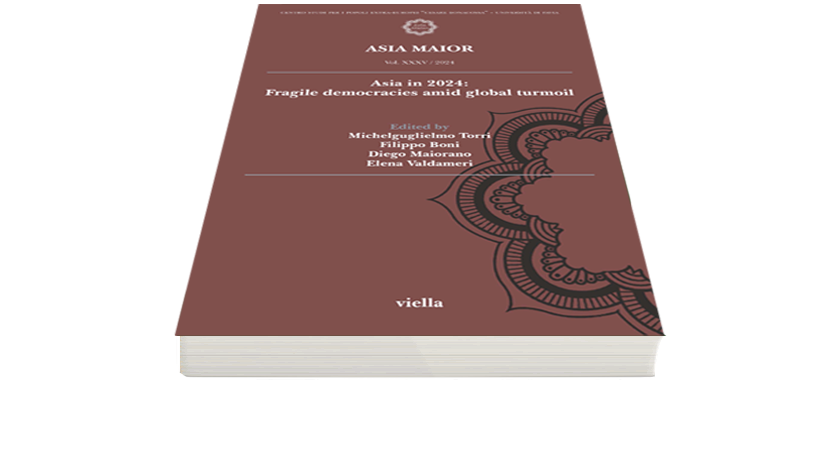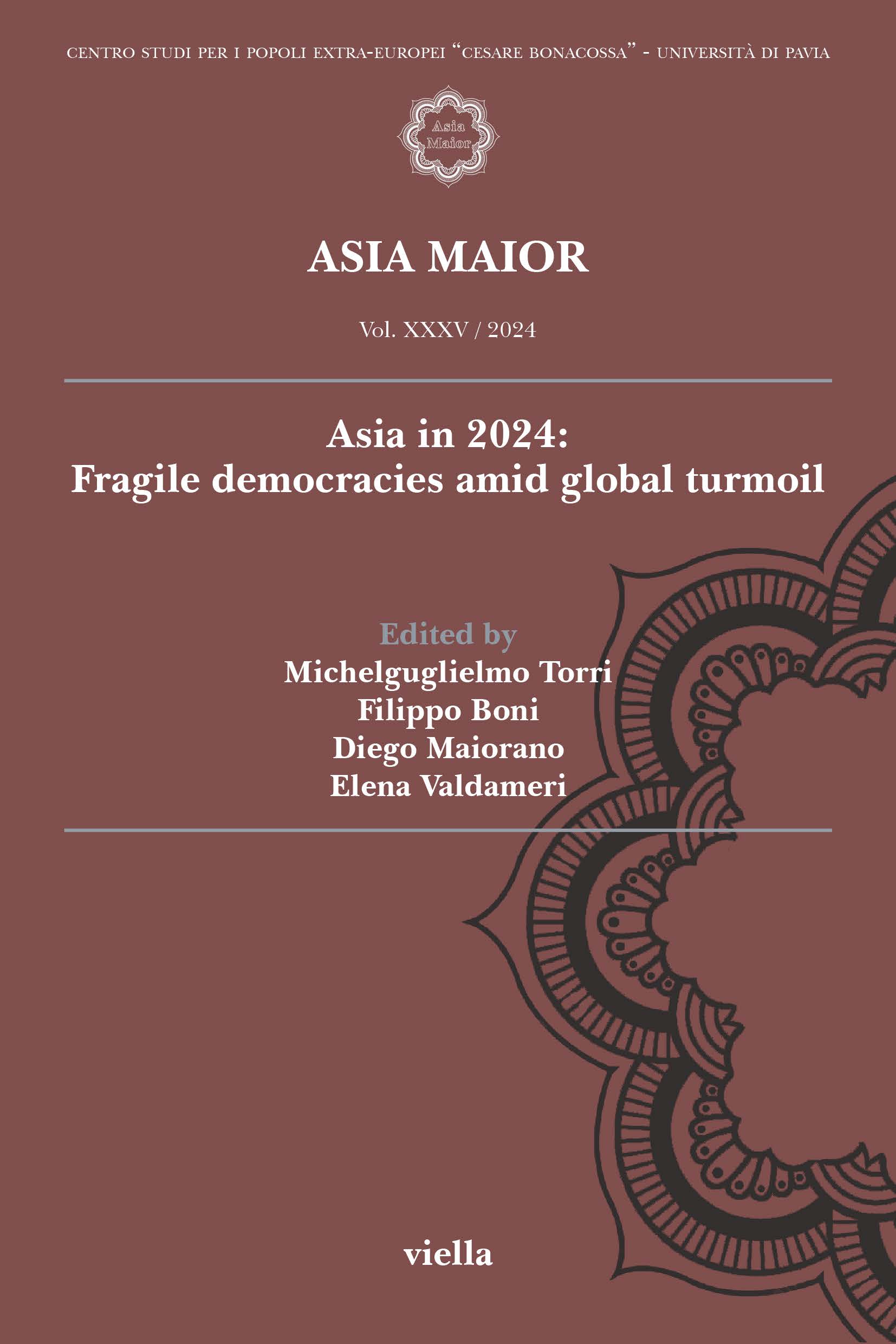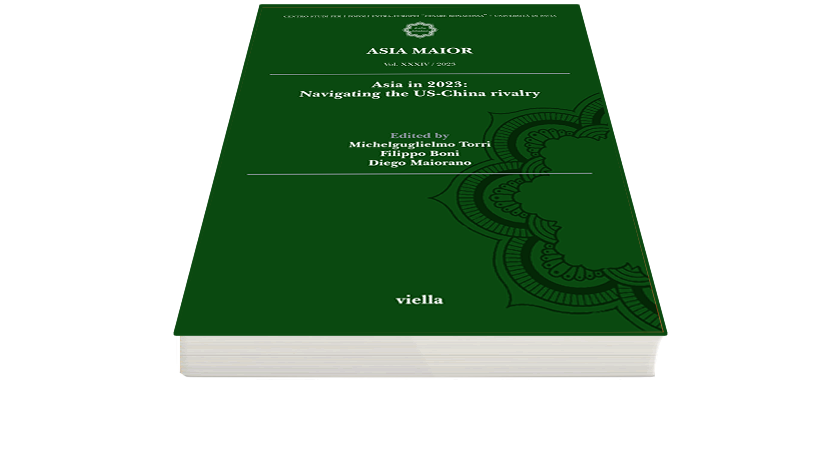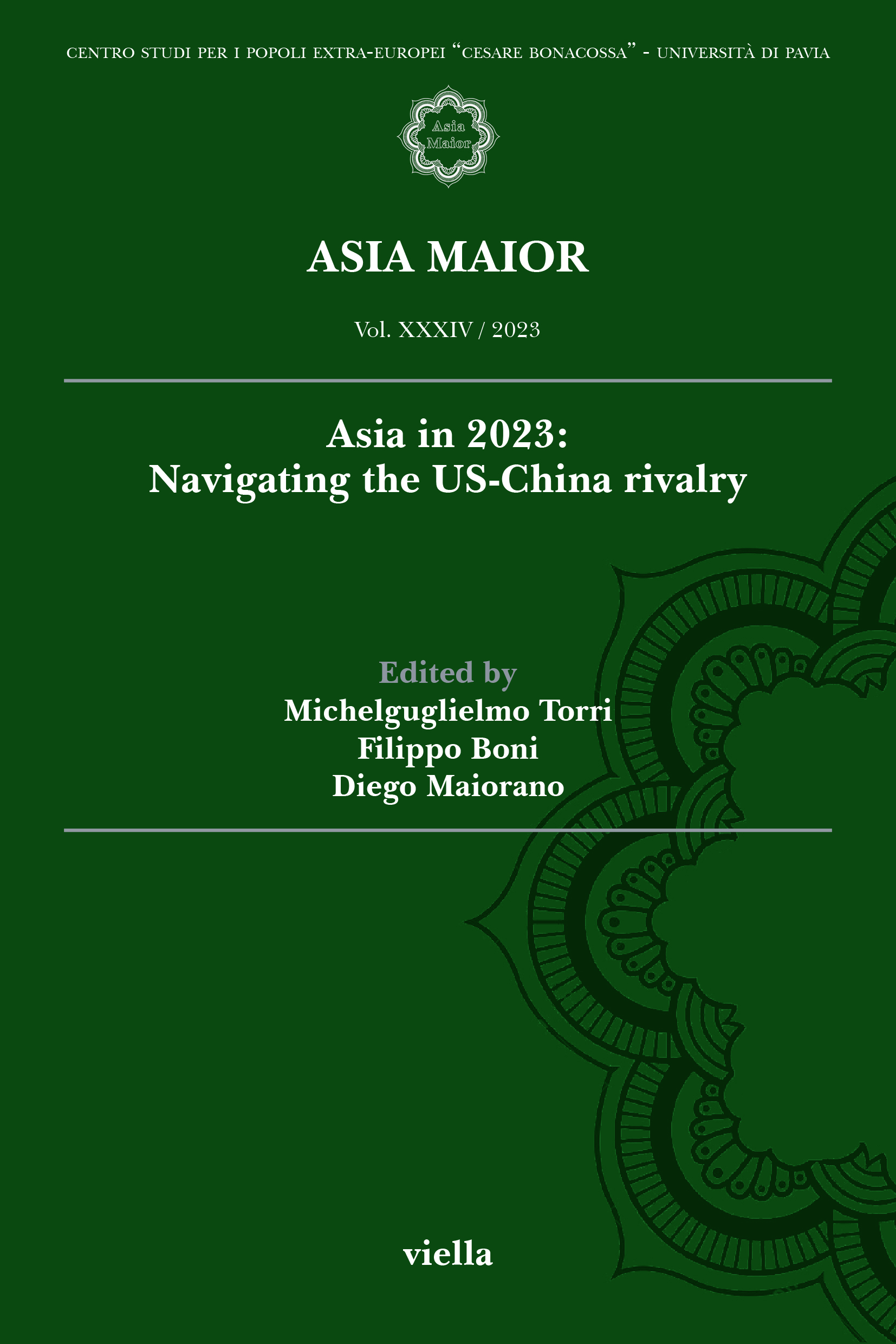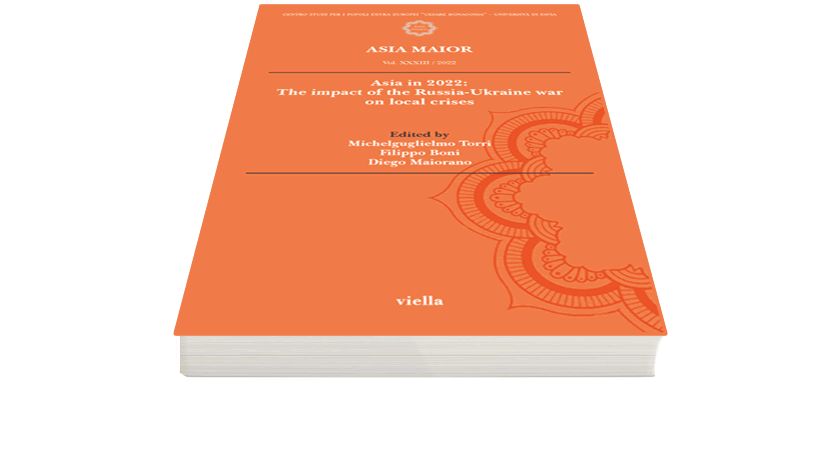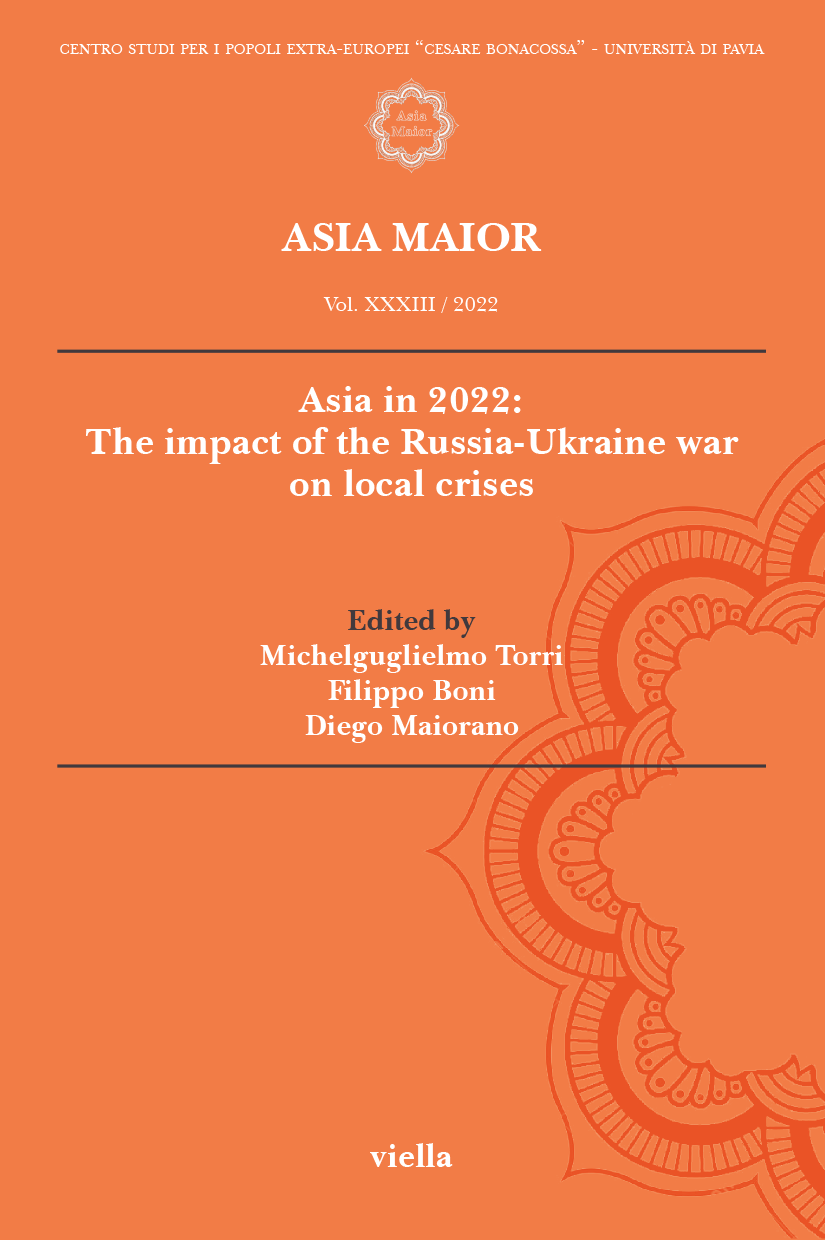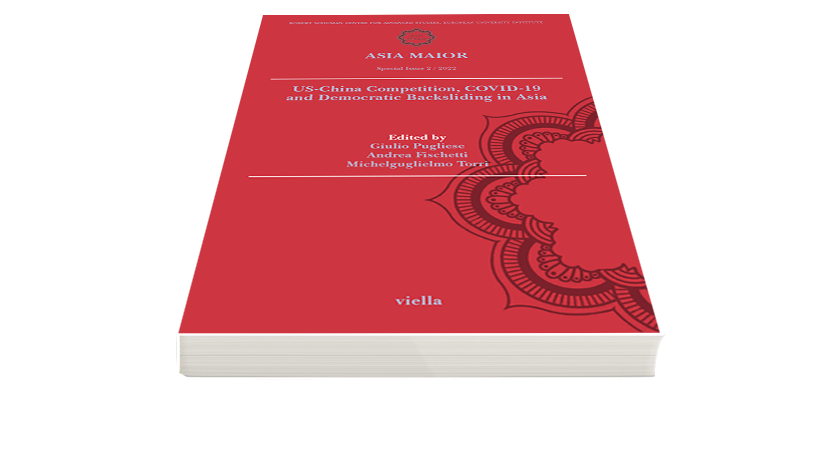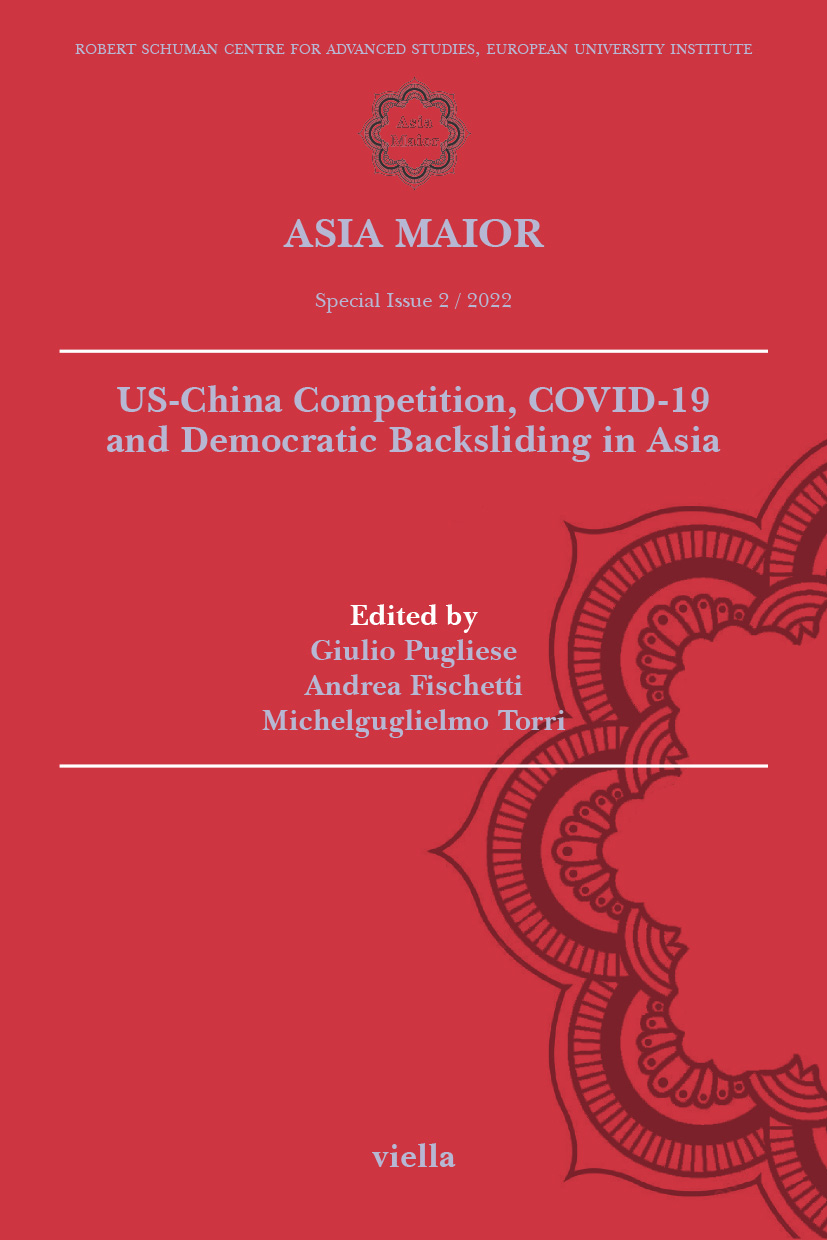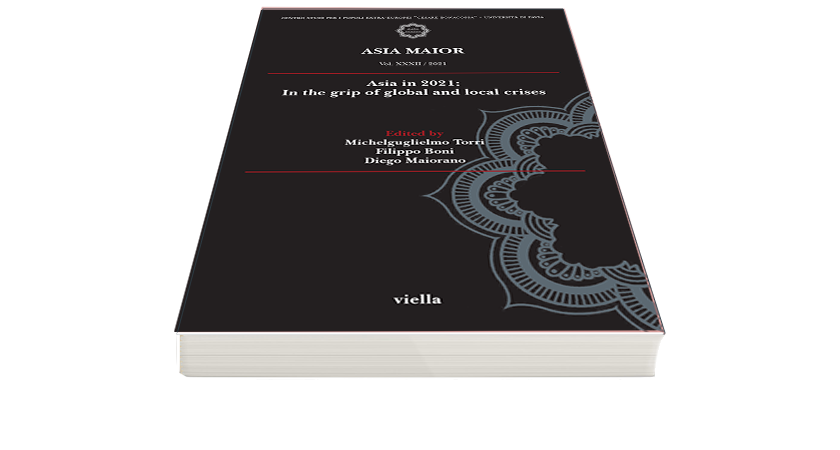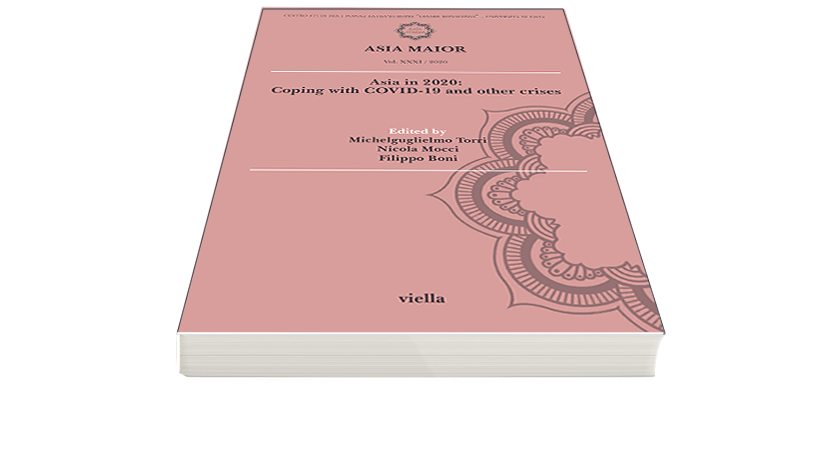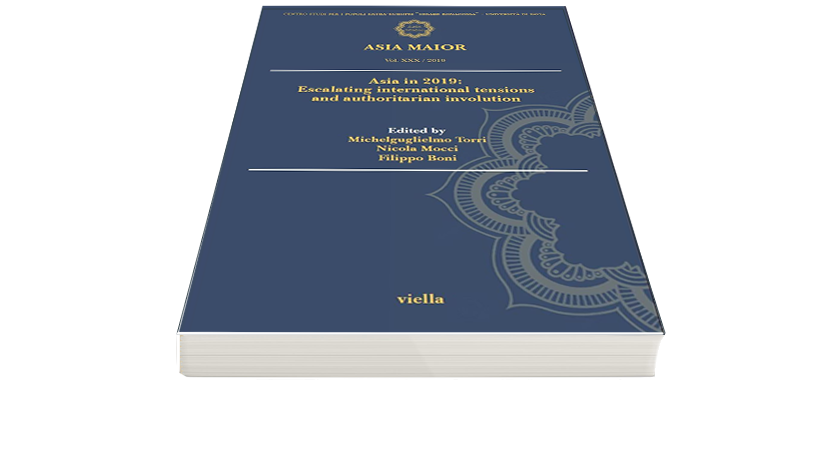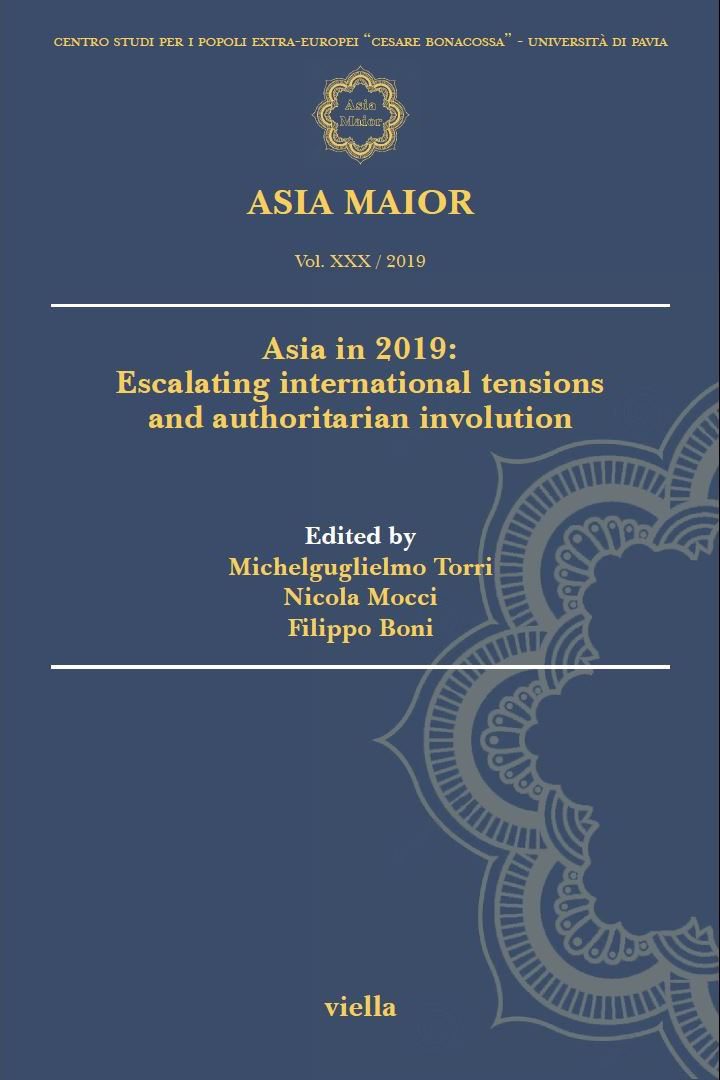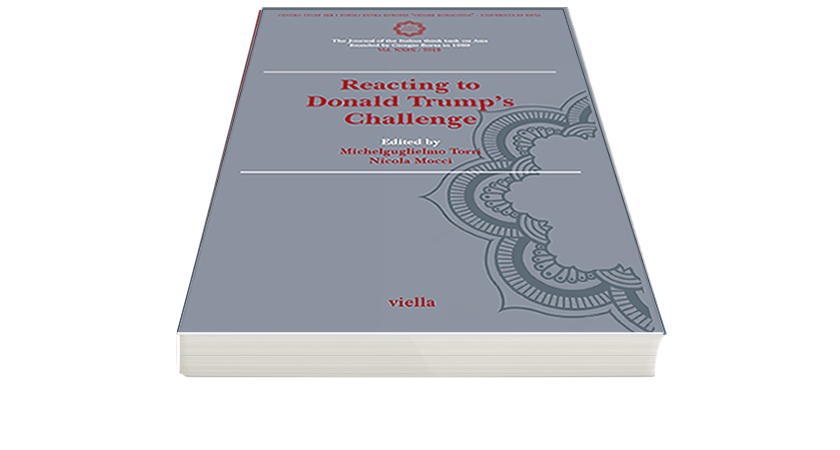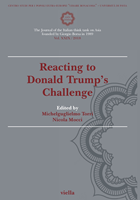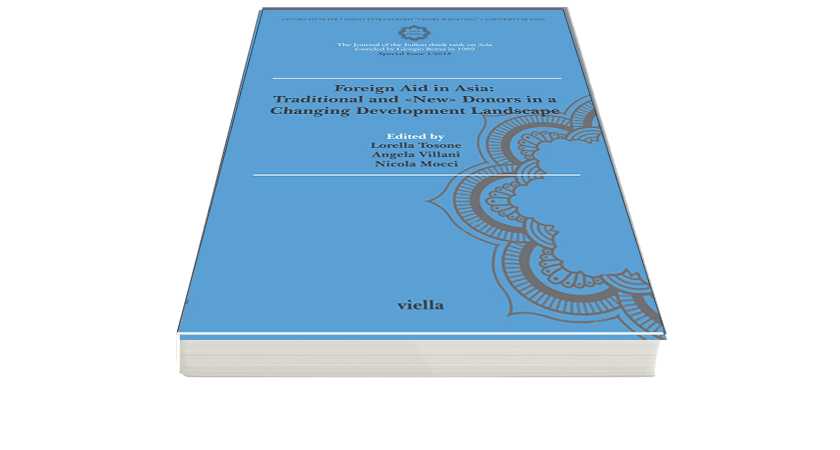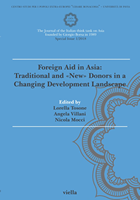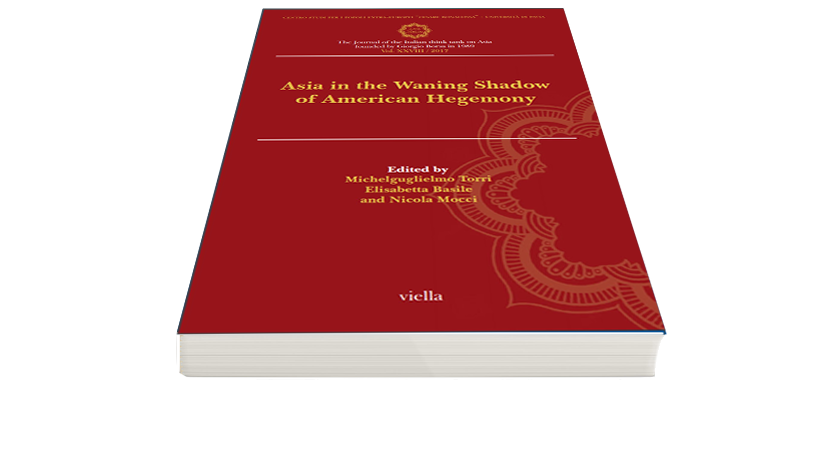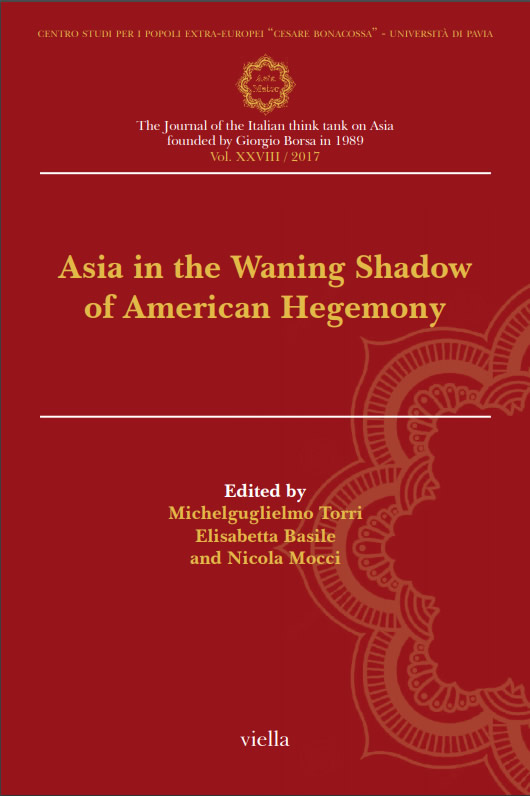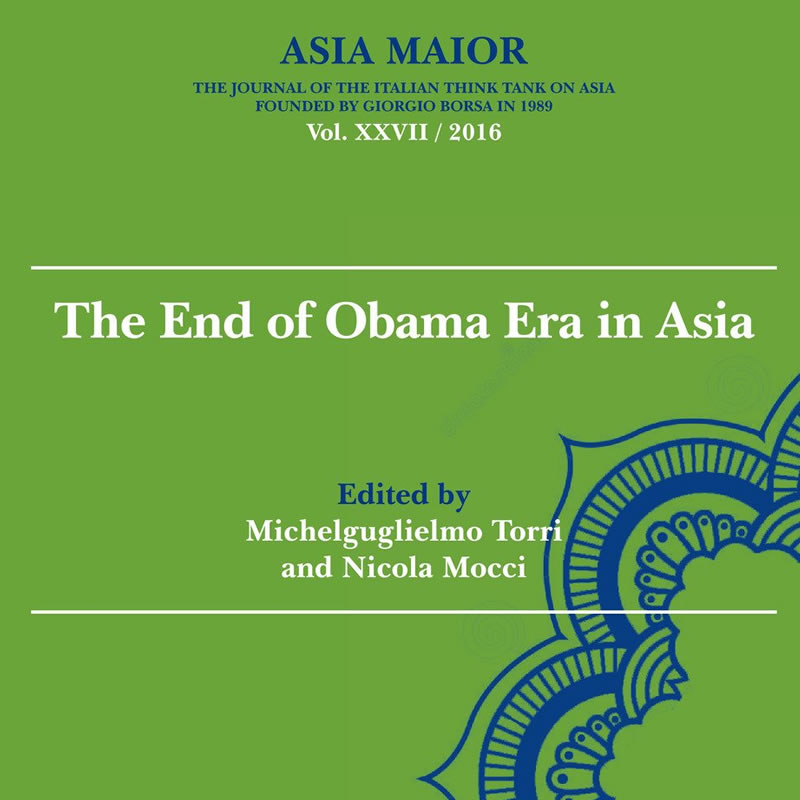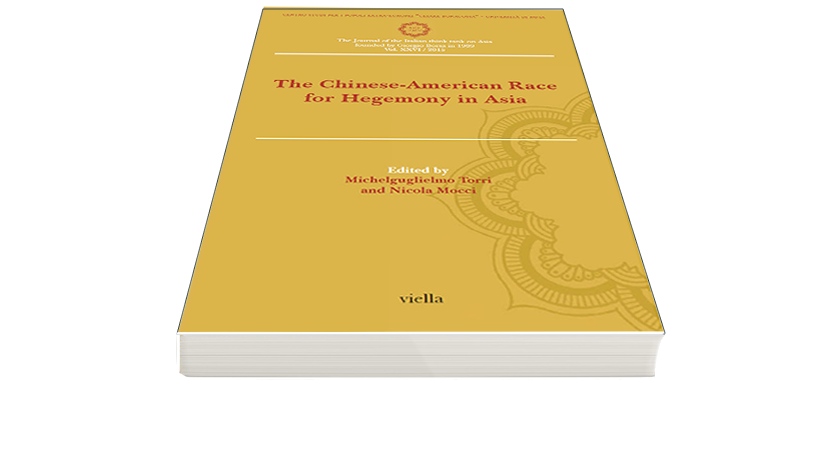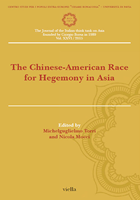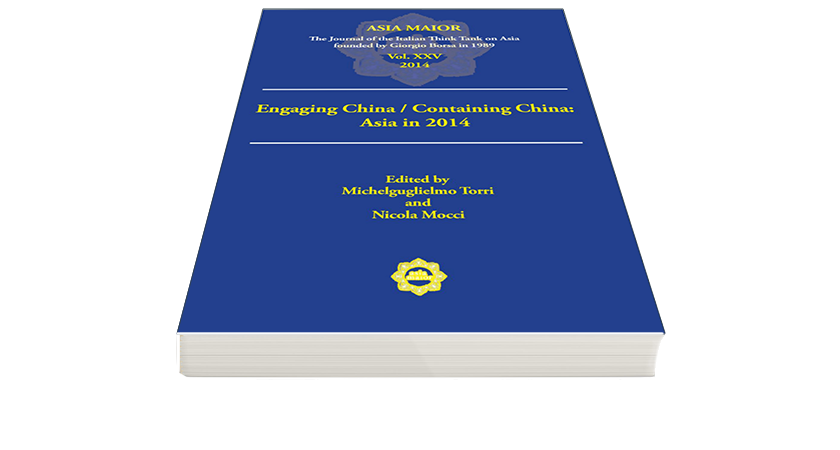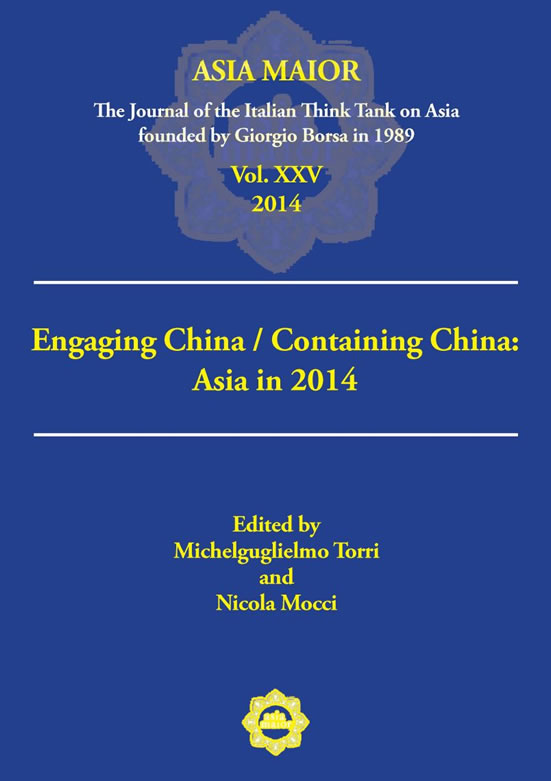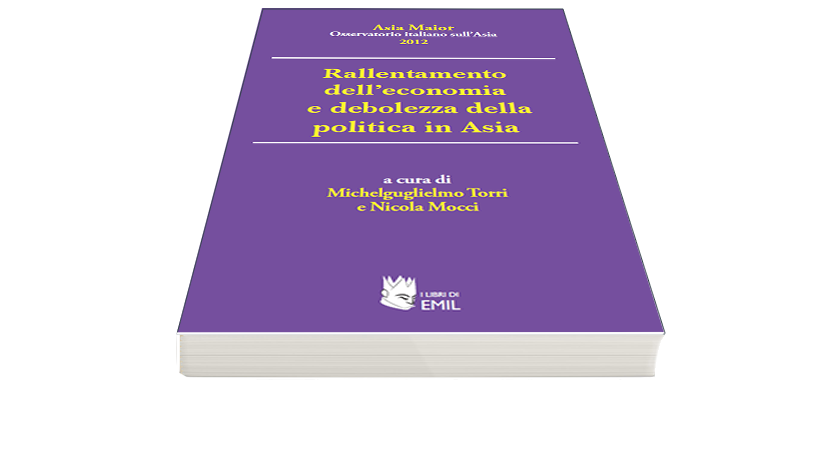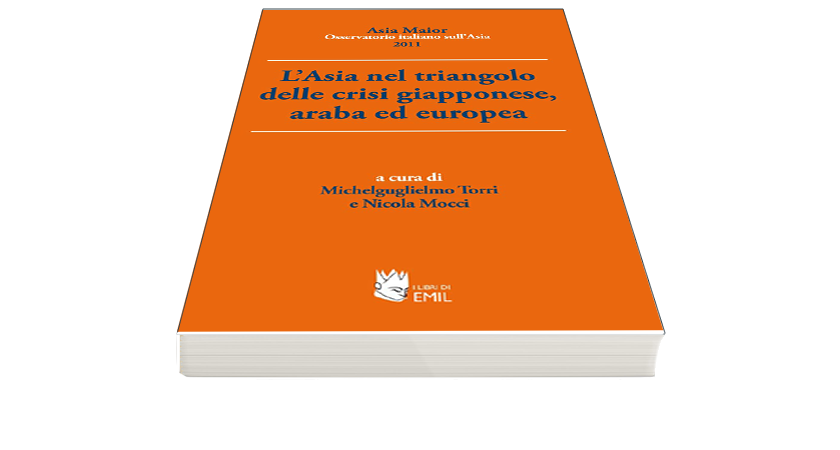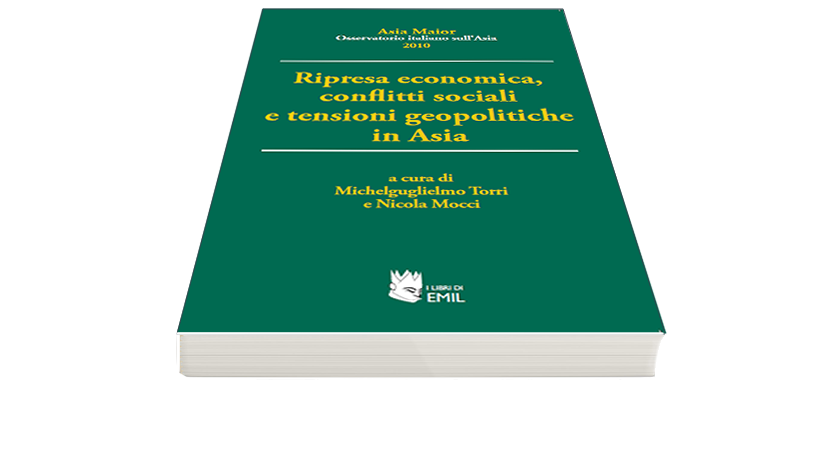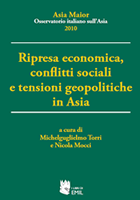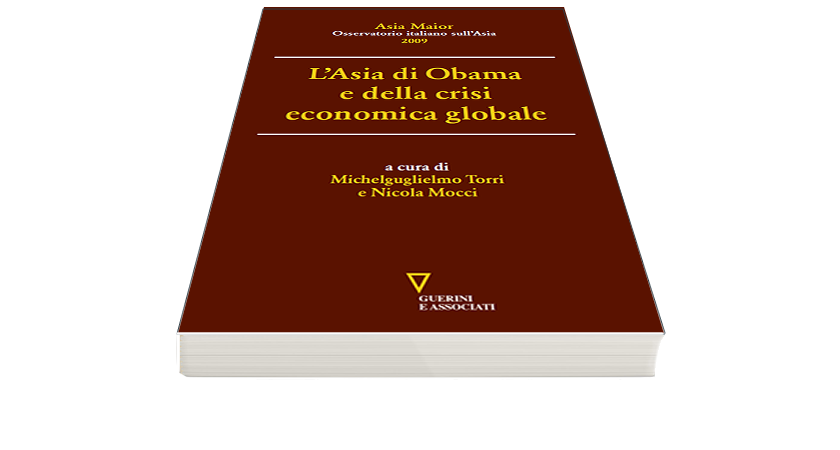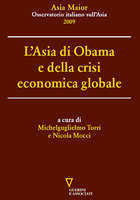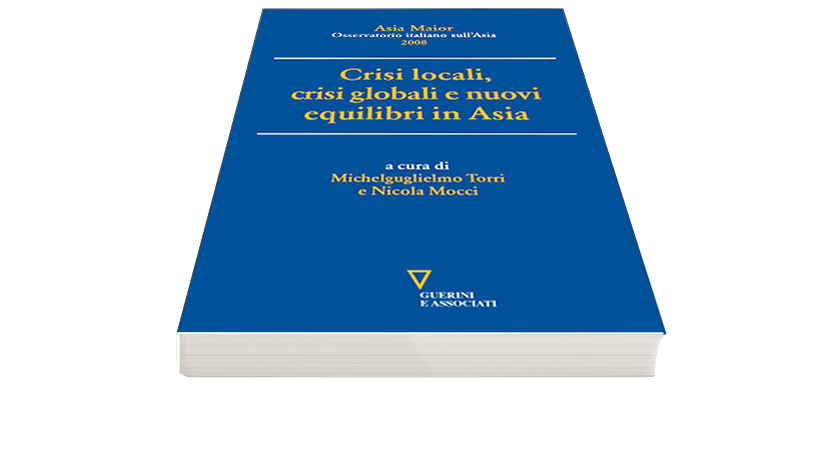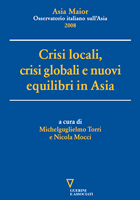Maritime Asia: A «theatre of consequence»
Conflict, competition and cooperation were evident during 2024 across maritime Asia; the waters running from the Red Sea across the Indian Ocean to the South China Sea, Taiwan Strait, the North-west Pacific and the Arctic Ocean. During the year two different combinations were noticeable around the Asian littoral, in geopolitical terms a flexible geometry of alignments. On the one hand, Russia, China, North Korea, Iran and the Houthis in various ways cooperated much more closely with each other during 2024, against the West in general and the US in particular. On the other hand, during 2024 South Korea, Japan and India also moved closer together with each other, with Australia and above all the US. European powers also appeared in maritime Asia in greater force during 2024. A common thread running through these developments was China’s growing maritime presence around Asia, reflecting its wider competition regionally with India and globally with the US.
Keywords – Indo-Pacific, China, India, naval, geopolitics, geo-economics, maritime.
1. The broader picture
2024 proved a challenging time for Maritime Asia. Ongoing structural competition across the Indo-Pacific, something of a new Great Game at sea between India and China in the Indian Ocean (the Arabian Sea in the north east, and the Bay of Bengal in the north-west) and between the US and China in the Western Pacific continued to deepen, and be reflected in competitive groupings. These broader realignments in the global security order spill over across all the waters of maritime Asia.
Two ongoing China-related maritime issues, the South China Sea and Taiwan, continued to cause problems, and indeed increased in tension. In the South China Sea, ASEAN and China failed to conclude any Code of Conduct, despite being mooted since 2018, while direct confrontation between the Philippine and a more assertive China was particularly evident during 2024 as was increasing Chinese pressure against Taiwan in and around the Taiwan Strait.
New outside issues also impacted on Maritime Asia during 2024. First, blowback from military conflict in Gaza between Israel and Hamas, sparked by the Hamas attacks in South Israel in September 2023 brought Iran, China and Russia together in varying degrees behind the Iranian-backed Houthis, who had intervened in support of Hamas. Second, further blowback from the Ukraine War, ongoing since February 2022, brought Iran, China and North Korea in behind Russia during 2024. The US Deputy Secretary of Defense for Indo-Pacific Security Affairs noted in Japan in November that Europe and the Indo-Pacific were to be acknowledged as «a single theater of consequence» in which «therein we will see further adjustments in the relationships between Pyongyang, Moscow, Beijing, Tehran» [Campbell 2024, 18 November].
In turn, relationships between the four QUAD members of Australia, India, Japan and the US, joined at various points by South Korea were intensified, as shown by their various meetings and exercises arranged and conducted through the year. The QUAD Leaders Summit in September denounced Houthi disruption in the Red Sea and Gulf of Aden; announced measures for increasing their own maritime cooperation, and specifically condemned Chinese «coercive» and «intimidating» hhmanoeuvres in the South China Sea [White House 2024, 21 September]. In October 2024, as designated «Partners» Australia, Japan, South Korea and Japan participated for the first time in a NATO Defense Ministers meeting; which labelled Iran, China and North Korea as «security spoilers» [NATO 2024, 17 October]. On the maritime front it is worth noting that Italy deployed its Carrier Strike Group (CSG) for the first time across the Indo-Pacific during 2024, carrying out military exercises with India, Japan and the US, but avoiding any contact with China.
2. Red Sea and the Gulf of Aden
Houthi attacks on shipping, which started in November 2023, were condemned on 10 January 2024 in the United Nations Security Council Resolution 2722, though China and Russia abstained.
Airstrikes by US and UK forces ensued two days later on Houthi bases in Yemen, and were immediately denounced in the Chinese state media [Global Times 2024a, 12 January]. Subsequently the US continued to use its carrier strength in the Red Sea to launch air strikes and interceptions throughout the year. Israeli attacks on Houthi bases in Yemen in late September 2024 were a direct response to Houthi drone attacks earlier in the month. Houthi attacks on Israel’s Red Sea port of Eliat on 17 November represented a further escalation, as did their seizure of an Israeli ship. Houthi missile attacks on Israel on 13 December were met with air strikes by Israel on 19 and 26 December on Houthi-controlled ports of Hudaydah, Salif, Ra’s Isa and the capital’s Sana’a International Airport.
Various responses ensued to contain the Houthi attacks. The Gulf States, with the exception of Bahrain, kept relatively quiet over the Houthis, with Qatar instead facilitating discussions during 2024 to broker a ceasefire in the Gaza strip. Operation Prosperity Guardian was set up in December 2023 by the US, which involved US and UK ships. However, the only Arab state involved was Bahrain, like Singapore sending some personnel. The other Gulf states of Kuwait, Oman, Qatar, Saudi Arabia and the UAE were absent. Operation Aspides was set up by the European Union in February 2024 and involved naval contributions from France, Germany, Italy, and Belgium. The Aspides operations were limited to interception at sea of Houthi drones and missiles, avoiding military strikes on land. The Indian navy dispatched three destroyers in January 2024 to beef up surveillance in the Gulf of Aden, and rescued the Philippine crew members of MV Confidence, hit by Houthi missiles, in the Gulf of Aden on 6 March.
Even as Western shipping companies switched routes from the Red Sea and the Suez Canal to the circumnavigation of Africa, the Houthis announced in March 2024 that Russian and Chinese ships would be exempt from attacks. With this exemption China was able to direct its own state shipping companies into picking up more of the Red Sea trade. News emerged, in September, that Iran had brokered ongoing secret talks between Russia and the Houthis for Russia to transfer anti-ship missiles to the Houthis [Irish 2024, 24 September], and, in October, that Russia was providing targeting information to the Houthis [Faucon and Grove 2024, 24 October].
India reached out to Saudi Arabia in 2024. Saudi Arabia’s Chief of Naval Staff Admiral Fahd bin Abdullah Al-Ghufaili held talks with his Indian counterpart Admiral R. Hari Kumar on maritime security in the region on 11 January, with particular reference to the Red Sea, the Gulf and the Arabian Sea. India’s Foreign Minister S. Jaishankar inaugurated the first India-Gulf Cooperation Council (GCC) Ministerial Meeting for Strategic Dialogue in September. The first EU-GCC Cooperation Council took place in October, reiterated support for UN Security Council Resolution 2722, put out their «demand that the Houthis halt attacks against vessels in the Red Sea and Gulf of Aden», and recorded specific appreciation of the Aspides operation «with the aim of safeguarding freedom of navigation in the international waters in the Red Sea» [EU-GCC 2024, 16 October].
3. Arabian Sea and Western Indian Ocean
Oman, a GCC member, continued to show its strategic significance for the UK and for India during 2024. The UK Littoral Response Group (LRG) arrived in the Arabian Sea in April 2024, headquartering at port city of Duqm. The LRG is made up of RFA Argus and RFA Lyme Bay, carrying landing craft, helicopters and marine commandos. It was immediately dispatched to carry out the Konkan exercise with India in the Arabian Sea. In February, India was also granted specific zonal space at the port of Duqm, which in turn helps both the general Indian imprint around the Arabian Sea and its operations in the Gulf of Aden/Red Sea. The Naseem Al Bahr exercise between India and Oman in October reaffirmed the close relations between these two littoral states.
The France-India-UAE trilateral formed in 2022 followed its naval exercises of 2023 with two Desert Knight aerial exercises over the Arabian Sea in January and December 2024, topping and tailing the year.
Growing trilateral cooperation between Iran, Russia and China was on show with their naval exercises Security Bond—2024 carried out in February in the Gulf of Oman. The Indian Ocean Naval Symposium Marine Exercise (IMEX) 2024, organized by Iran, involved naval drills held by Iran, Oman and Russia ships in October 2024 with Bangladesh, India, Pakistan, and Qatar, Saudi Arabia and Thailand observing.
On Iran’s coast, in May 2024 Indian Ports Global Limited (IPGL) was given 10-year running rights at Chabahar in return for investments of around US$ 370 million. From India’s point of view, this opened the way for the International North-South Transport Corridor (INSTC) which would by-pass the China-Pakistan corridor and leapfrog over Gwadar, Pakistan’s China-run port. The India-UAE Virtual Trade Corridor Deal, signed in September, represented an important step towards the India-Middle East-Europe Economic Corridor (IMEC). IMEC, linking India’s Western-facing ports with the Gulf and over to the Mediterranean, is an important alternative to China’s Maritime Silk Road initiative.
Pakistan’s quest for sixth-generation advanced submarines was on show as China delivered the first of eight diesel-electric Hangor-II advanced submarines to Pakistan in April 2024. Pakistan’s attempts to keep pace with India were evident in November with its successful flight test of the indigenously developed Ship-Launched Ballistic Missile (SLBM). India’s Western Fleet was significantly augmented in September with allocation to it, in September, of INS Vikrant, an aircraft carrier. She joined its sister aircraft-carrier ship INS Vikramaditya at Karwar Port, on the Western Coast of India (Karnataka).
The Lakshadweep islands played an important role for India in 2024. Narendra Modi’s first visit of the year, on 2 January, was to these little-visited islands. INS Jatayu, the second Indian naval base on the Lakshadweep Islands was opened in March at Minicoy Island, with India’s Defence Minister Rajnath Singh traveling there with India’s two Carrier Strike Groups, altogether 15 ships. In July, India cleared major plans from the Department of Military Affairs to build two military airfields in Lakshadweep, involving a new airbase on Minicoy and an extension of the existing air field on Agatti.
Amid competition with China, India recovered its position among the island states of the Indian Ocean. In the Maldives the pro-Chinese administration of Mohamed Muizzu, in power since September 2023, performed something of a U-turn from an «India out» to a «closest ally» position, a somersault highlighted by Jaishankar’s visit in August 2024 [Naish 2024, 14 August]. The India-Seychelles relationship was upgraded to a Comprehensive Economic and Security Partnership when Modi met Muizzi in October. In Sri Lanka, elections in September delivered the Presidency to the leftist Anura Kumara Dissanayake, with the Chinese state media looking forward to his tenure, as the new President was «expected to boost ties with Beijing» [Global Times 2024f, 22 September]. Nonetheless, Dissanayake’s visit to India in December saw Sri Lanka re-emphasizing security cooperation with India.
The Colombo Security Conclave (CSC) advanced during 2024 in membership and structure. Already made up of India, Maldives, Mauritius and Sri Lanka, the membership of Bangladesh was approved in July. The National Security Advisers of the member countries, tasked with assuring «maritime safety and security», met in August to formally sign the CSC Charter and a memorandum of understanding for the establishment of a Secretariat [Government of India 2024, 30 August].
4. Bay of Bengal and Eastern Indian Ocean
India’s Eastern Fleet, was also significantly augmented in August with the induction of India’s second nuclear-powered ballistic missile submarine (SSBN), INS Arighat, which joined its sister-vessel INS Arihant in the port of Visakhapatnam (Andhra Pradesh). In November, the Arighat carried out India’s first firing of a K-4 nuclear-capable 3,500-mile range ballistic missile.
The Milan exercises organized by India in February from its bastion of the Andaman & Nicobar Islands attracted record numbers. 51 delegations were present; naval assets from Australia, France, Indonesia, Iran, Japan, Malaysia, Mauritius, Myanmar, Russia, Seychelles, Sri Lanka, Thailand, the United States and Vietnam were present. Neither China, nor Pakistan, were invited; with China denouncing the event [China Military 2024a, 28 February]. Deliberately on show were India’s two aircraft carriers INS Vikramaditya and INS Vikrant.
In October, at India’s Eastern Command at Visakhapatnam, India hosted the four-way Malabar exercise involving Australia, India, Japan and the United States; exercises condemned in the Chinese state media [Qian 2024, 17 October].
Finally, the 43rd India-Indonesia Coordinated Patrol (CORPAT) exercise took place on 10-18 December as an expression of further «deepening maritime ties in a transforming Indo-Pacific». Its timing overlapped with India’s Admiral Chief of the Naval Staff (CNS) Dinesh Tripathi’s official visit to Indonesia from 15-18 December [Siddiqui 2024, 14 December].
Port control rivalries remain evident. In Myanmar, China’s control of Kyaukphyu deep water port had been re-affirmed in November 2023, but was overtaken when India Ports Global Ltd. (IPGL) gained complete operational control of Sittwe in May 2024. However, at Coco Islands (which are part of the Yangon region of Myanmar), where the Chinese have been present since 1994, when they seemingly leased one of them, in April, high resolution imagery showed the completed construction of a military hangar alongside a reconstructed airstrip and jetty. This re-ignited earlier fears of a Chinese intelligence-gathering facility looking across to India’s sensitive Nicobar and Andaman Islands.
Indonesia was involved in different-pointing naval exercises in 2024. The largest ever Super Garuda Shield was hosted by Indonesia from 26 August to 6 September; a multi-domain exercise involving Australia, Brazil, Brunei, Canada, France, India, Indonesia, Japan, New Zealand, Singapore, South Korea, Thailand, the U.K. and the US. China was a notable absentee. Following talks in Moscow in July by Indonesia’s new February-elected President, Prabowo Subianto, the first ever Russia-Indonesia joint naval exercise, Orruda 2024, took place in the Java Sea from 4-8 November. This involved KRI I Gusti Ngurah Rai and KRI Franz Kaisiepo from the Indonesian navy and the RF Gromky, RF Rezky and RF Russian Federation Hero Aldar Tsydenzhapov from the Russian Navy. The largest amphibious exercise held to date between Indonesia and Australia, Keris Woomera, took place in the Java Sea from 13-17 November; it involved HMAS Stuart and HMAS Adelaide from the Australian navy and KRI Raden Eddy Martadinata and KRI Makassar from the Indonesian navy.
5. South China Sea
China’s naval shadow was prominent in the South China Sea during 2024. Live fire joint naval drills were held with Russia in the South China Sea in July. China’s own naval strength was apparent in October with the first joint appearance in the South China Sea of the Liaoning and Shandong Carrier Strike Groups. Friction between China and the Philippines dominated 2024 in the South China Sea, with particular flashpoints at Second Thomas Shoal, Scarborough Reef, Escoda Shoal and Sabina Shoal.
Defence of Philippine waters was encapsulated in the legal «push back» announced by Philippine President Ferdinand Marcos jr. in March 2024 against threats from China to «our sovereignty, sovereign rights, and our jurisdiction in the West Philippine Sea [South China Sea]» [Marcos 2024, 4 March]. President Marcos’ Executive Order no. 57 on 25 March Strengthening the Philippines Maritime Security and Maritime Domain Awareness set up a National Maritime Council. Towards the end of the year, the Philippine Maritime Zones Act and the Philippine Archipelagic Sea Lanes Act were signed into effect by Marcos on 8 November. Two days later, China responded with formally drawing expansive territorial baselines around Scarborough Reef. Marcos also announced in December that the Philippines was seeking a further arbitration award against China, to match the 2016 findings by the Permanent Court of Arbitration (PCA), which considered that Beijing’s «nine-dash line» enclosing most of the South China Sea based on «historical rights» provided no legal basis for sovereignty.
The Philippines spent much of 2024 seeking and gaining external support, immediately denounced in the Chinese state media as the Philippines’ misguided attempt to build a «united front» against China. [Liu 2024, 26 January].
Marcos, during his state visit to Vietnam in January 2024, asserted: «Vietnam remains the sole strategic partner of the Philippines in the ASEAN region …. maritime cooperation is the foundation of our Strategic Partnership» [Marcos 2024, 30 January]. The visit brought a Maritime Cooperation Agreement to increase coordination on South China issues, whose details were left vague, but tacitly aimed at China, and triggered warnings in the Chinese state media that Philippine-Vietnam cooperation might be to «the detriment of China’s interests in the South China Sea» [Wang 2024, 29 January]. The first ever joint drills involving Coastguards ships from the Philippines and Vietnam were organized in 9 August, followed by Letters of Intent between their defence ministers on 30 August engaging to sign a formal defence cooperation agreement.
However, the ASEAN Summit in October brought no direct support for the Philippine position in the South China Sea, and studied silence from other states like Malaysia, whose chief of navy instead stated that «when our ships meet them, their response have been positive; they do not act aggressively» [Bernama 2024, 18 October]
Support was also sought by the Philippines from India. India’s Minister for External Affairs Subrahmanyam Jaishankar visited Manila in March 2024, where he stressed that «as two seafaring nations of the Indo-Pacific, our maritime cooperation holds great potential». Subrahmanyan briefed his Philippine counterpart about «the Indian Navy’s deployments in the Red Sea and the Arabian Sea to counter ongoing threats» and reiterated «India’s support to the Philippines for upholding its national sovereignty» [Jaishankar 2024, 26 March]. This latter point was immediately denounced in the Chinese state media, under the headline: «India is naive to interfere in South China Sea issue» [Global Times 2024b, 27 March]. Indian support for the Philippines became tangible with the arrival of shipment of Indian-made BrahMos supersonic anti-ship cruise missiles in April.
Various India-Philippine talks were held in September. Foreign Office officials held the 14th India-Philippines Policy Consultation Talks and the 5th Strategic Dialogue on 9 September in New Delhi. The 5th Joint Defense Cooperation Committee (JDCC) meeting held on 11 September in Manila focused on maritime security, including joint exercising, and was upgraded from joint secretaries to defence secretaries level.
Marcos’ tilt back towards the US and other associated security partners like Japan and Australia was particularly noticeable during 2024. US National Security Advisor Jake Sullivan’s discussions with his Philippine counterpart on 1 April spelt out firmer US commitments to the Philippines «which extends to armed attacks on Philippine armed forces, public vessels, or aircraft – to include those of its Coast Guard – anywhere in the South China Sea» [White House 2024, 1 April].
7 April witnessed four-way naval exercises by the Philippines with the US, Japan and Australia, for the first time ever in the South China Sea, explained as being in support of «freedom of navigation» in a «free and open Indo-Pacific», and affirming the validity of the 2016 South China Sea Arbitral Tribunal Award [US Department of Defense 2024, 5 April].
The first ever trilateral leader’s summit between Marcos, Biden and Kishida was held on 11 April; their Joint Vision Statement emphasized their being «equal partners and trusted friends, united by the vision we share of a free and open Indo-Pacific» [White House 2024, 11 April]. This leadership summit format was repeated in August. It was denounced in the Chinese state media [Ding 2024, 17 April].
The Balikatan «Shoulder to Shoulder» Philippine-US exercise, run from 22 April to 10 May, was the largest ever with 17,000 troops from both sides, and joined by Australia and for the first time France. On the one hand, the Philippine Armed Forces stated that «the key event» would be «the sinking of the adversary’s vessel», a former Chinese-owned ship [Armed Forces of the Philippines 2024, 16 April]. On the other hand, the event was denounced in the Chinese state media, which pointed out «using Chinese-made ships as targets for military exercises is a ridiculous stunt by Philippines» [Global Times 2024c, 20 April].
Philippine Defence Minister Gilberto Teodoro met his Australian, Japanese and US counterparts in Hawaii on 3 May. Their Joint Readout stated their general «shared vision for a free, open, secure and prosperous Indo-Pacific» interspersed with «serious concern over the PRC’s repeated obstruction of Philippine vessels’ exercise of high seas freedom of navigation and the disruption of supply lines to Second Thomas Shoal». The Joint Readout also «called upon the PRC to abide by the final and legally binding 2016 South China Sea Arbitral Tribunal Award» [US Department of Defense 2024, 3 May]. This was immediately denounced in the Chinese state media under the headline «US assembles ‘Squad’ of allies to counter China» [Global Times 2024d, 5 May].
On the 8 July the Japan-Philippines Reciprocal Access Agreement (RAA) was signed, with the Philippines described as «a strategic partner located at a strategic juncture on the sea lanes» [Government of Japan 2024, 8 July]. It was immediately denounced in the Chinese state media [Xu and Guo 2024, 8 July].
Joint US-Philippine patrolling carried out on 31 July in the Philippine’s Exclusive Economic Zone in the South China Sea was followed on 2 August with the first ever joint Philippine-Japan drills in the South China Sea, duly denounced in the Chinese state media as «provocative» [Leng, 2024, 17 August]. Further support for the Philippines was on show with the quadrilateral operations carried out by Australia, Canada, the Philippines and the US and denounced as «absurd» in China [Siow 2024, 17 August]. The operations, which took place in the Philippine EEZ area from 7-8 August, were tailed by three Chinese naval units, and denounced in the Chinese state media as «Philippines’ provocations» [Global Times 2024e, 9 August].
Five-way joint patrolling was carried out by Australia, Japan, New Zealand, the Philippines and the US in the Philippine’s Exclusive Economic Zone in the South China Sea on 28 September. This was denounced in China, which responded with its own drills around Scarborough Shoal [Liu 2024, 28 September].
Sama Sama naval exercising commenced for two weeks in the waters off Northern Philippines facing Taiwan, running from 7-18 October. The high-intensity exercise focused on anti-submarine, anti-surface and anti-air warfare, and involved a widest ever participation. Almost 1,000 personnel from Australia, Canada, France Japan, the Philippines and the US, as well as observers from the UK, practised anti-submarine warfare techniques and the patrol of contested waters.
Later that month, the Kamandag island amphibious exercises hosted by the Philippines from 15-25 October, saw the largest number of participating countries; with troops from Australia, France, Japan, South Korea, the UK and the US alongside the Philippine Marine Corp. It was immediately denounced in the Chinese state-media as South China Sea-related, and aimed against China [Zhang and Guo 2024, 16 October].
The Australia-Philippine Defense Ministers Meeting mechanism, inaugurated on 15 November, stressed the common concerns over the situation in the South China Sea, reiterated the need there for freedom of navigation, and agreed that the Philippines would participate in the Exercise Talisman Sabre next year [Government of Australia 2024].
The General Security of Military Information Agreement signed on 18 November between the Philippines and the US was aimed at enhancing Manila’s maritime awareness in the South China Sea through access to US satellite imagery.
US Secretary of Defense Lloyd Austin’s visit to the Philippines included public disclosure on 19 November that at Palawan he «met with some American service members deployed to US Task Force Ayungin». «Ayungin» is the Philippine name for Second Thomas Shoal, the source of particular Philippine-China friction. Hence Lloyd Austin’s statement revealed the existence of a previously unknown US Task Force involved in a previously unknown operation which seemed to reflect intelligence gathering work by the US military. The fact was immediately denounced in the Chinese state media [Liu 2024, 21 November; Hu and Fan 2024, 26 November].
A five-way defence minister’s format was inaugurated on 21 November where the Defence Ministers from Australia, Japan, the Philippines, South Korea and the US recorded their «vision of a free, open, secure, and prosperous Indo-Pacific, where international law and sovereignty are respected» [US Department of Defense 2024, 21 November].
Trilateral Japan-Philippine-US naval patrols mounted on 6 December in the Philippine’s EEZ in the South China Sea, were immediately denounced in the Chinese state media [Wang 2024, 6 December].
Finally, a new trilateral Japan-Philippine-US Maritime Dialogue mechanism was inaugurated on 10 December, and recorded their «serious concerns about the PRC’s dangerous and unlawful behaviour in the South China Sea» [White House 2024, 10 December]. An inaugural Philippine-India Maritime Dialogue was inaugurated on 18 December, with agreement to deepen naval collaboration.
6. Taiwan Strait
Rising tension in the Taiwan Strait was palpable in 2024, as there continued to be speculation on how far successful Russian aggression on Ukraine would embolden China to strike against Taiwan. The victory of the independence-leaning Democratic Progressive Party (DPP) leader Lai Ching-te in the Presidential Elections held in May 2024 heightened speculation over Beijing’s intentions [Insisa 2024, pp. 147-157].
The formal Joint Sword exercises, initiated in 2022, were expanded in numbers during 2024. «Joint Sword 2024A» and «Joint Sword-2024B» were respectively carried out in May and October. The exercise carried out in October 2024 included the deployment of the Liaoning Carrier Strike Group, which carried a record total of 125 aircraft and included 17 destroyers. Taiwan’s President Lai also carried out a successful Pacific tour to Hawaii-Marshall Islands-Tuvalu-Guam-Nauru from 30 November to 6 December. However, this was immediately and deliberately followed by unprecedented Chinese drills, in effect a Joint Sword 2024C, initiated on 9 December, which involved nearly 90 navy vessels and coast guard ships in the East and South China Seas, in waters near Taiwan and the southern Japanese islands.
What was also noticeable in the second half of the year was the transit situation in the Taiwan Strait, claimed by Beijing as Chinese waters. The US had been unilaterally transiting on a regular basis, but, in 2024, other Western nations joined the US in challenging China’s sovereignty on the Strait. Taiwan obviously welcomed such transits, while China, equally obviously, denounced them.
An instance of this new development was joint US-Canada transits. After carrying out trilateral Noble Stingray exercises with Japan in the East China Sea, the USS Ralph Johnson and HMCS Ottawa transited together through the Taiwan Strait on 7 September, to then carry out Noble Wolverine Exercise in the South China Sea. Another joint transit was carried out by the USS Rafael Peralta and HMCS Ottawa on 1 November. New Zealand’s MNZS Aotearoa and Australia’s HMAS Sydney jointly transited on 25 September, indeed simultaneously with Japan’s transit, for the first time, by JS Sazanami. As far as the Europeans were concerned, the Netherlands for the first time deployed through the Taiwan Strait one of its warships, the HNLMS Tromp, on 31 May. Germany sent through the Taiwan Strait the FGS Baden-Württemberg and the support ship Frankfurt, on 13 September. France’s FS Prairial passed through on the 29 October.
7. North-East Asia
Japan has felt threatened by Chinese warships increasingly navigating through the Ryukyu Islands via the Miyako and Ishigaki Straits; with Japan placing Type 12 anti-ship missiles on Miyako Island for the first time in March 2024, a move promptly denounced by China as having «obvious offensive characteristics» aimed at China [Wong 2024, 8 April]. The US Marine Corps also set up a new unit at Okinawa in June, the Marine Littoral Regiment (MLR), tasked to lend support along the first island chain, up to the Japanese home islands and down to the Philippines. September saw a further escalation as the Chinese aircraft carrier Liaoning transited through the Ryukyu Islands for the first time, between Yonaguni and Iriomote Islands. The Japanese government responded by declaring it was «utterly unacceptable from the perspective of the security environment of Japan and the region» [Parry 2024, 18 September].
Japan, like India, is in an aircraft carrier race with China. Since 2022 Japan has been converting its two helicopter carriers JS Kaga and JS Izumo into fully-fledged fixed wing aircraft carriers, carrying F-35Bs. The first stage of the converted aircraft carriers was unofficially unveiled in April 2024, and successful test flight landings were carried out in October off the coast of South California on JS Kaga. Both helicopter carriers were sent on Japan’s 2024 Indo-Pacific Deployment (IPD), the longest to date and the most powerful, including as it did both of these carriers.
As part of Ocean-2024, two nuclear submarines, the Krasnoyarsk and the Imperator Aleksandr III, commissioned in December 2023, were transferred from the Northern Fleet on the Kola peninsula to the Pacific Fleet at Vladivostok. Japan’s distrust of Russia and its Pacific Fleet was exacerbated in November 2024 by Japan’s first sighting of a Russian Yasen-class nuclear-powered submarine transiting La Perouse Strait between Japan’s Hokkaido and Russia’s Sakhalin islands, the first time Tokyo has observed this advanced Russian submarine.
Russia-China naval cooperation has also been manifest in North-East Asia where naval exercise Ocean 2024 saw Russian vessels joined by Chinese vessels in September 2024 in the Sea of Japan, with the combined Russia-China flotilla then proceeding around both sides of the Japanese archipelago. North-Joint 2024 to the north saw further exercising in the Sea of Okhotsk. Russian and Chinese coast guard vessels sailed together for the first time up to the Bering Sea on 28 September.
South Korea’s distrust of Russia was similarly heightened by North Korea’s strengthening its military ties with Russia, which involved the danger of potential transfer of nuclear technology from Russia to North Korea. An unexpected development was the dispatch of around 10,000 North Korean troops to fight alongside Russian troops in the Ukraine war in autumn 2024. This followed the supply of North Korean missiles to Russia and Putin’s own summit with Kim Jong Un in June 2024. A formal defence cooperation pact was signed in 2024.
North Korea has pushed forward with its own submarine program. A first was the test, in January 2024, of the Pulhwasal-3-31, a new generation of nuclear-capable cruise missile, which was launched by a submarine, its previous testing in 2023 having been carried out from a fixed submerged platform. South Korea’s riposte was immediate, and consisted in the launch of a submarine-launched ballistic missile (SLBM) from an underwater fixed platform. In April, the newest and largest submarine, a 3500-ton KSS-III diesel submarine, was delivered by Hyundai Heavy Industries and judged a «milestone» as it was able to fire SLBMs [Bergmann 2024, 4 April]. A further twist was that in August news became public that North Korea had started building a nuclear-powered submarine. According to some analysts, this represented North Korea’s «biggest threat» yet to South Korea [Newdick 2024, 9 October].
The increasingly tight cooperation between Russia, China and North Korea brought Japan, South Korea and the US still closer together. 2024 started with them setting up an Indo-Pacific Dialogue mechanism on 5 January in Washington. In this occasion, the three countries denounced the «recent dangerous and escalatory behaviour supporting unlawful maritime claims by the PRC in the South China Sea», reiterated the commitment to freedom of navigation, «opposed any unilateral attempts to change the status quo by force or coercion anywhere in the waters of the Indo-Pacific», condemned North Korea’s «unlawful nuclear and ballistic missile programs, growing military cooperation with Russia» and reaffirmed «the importance of peace and stability across the Taiwan Strait as indispensable to security and prosperity in the international community» [US Department of State 2024, 7 January]. This new mechanism was immediately denounced in the Chinese state media as «a collective attempt to restrain China» [Zhang 2024, 7 January]. The year ended with a formal Secretariat set up in December to further align Japan-South Korea-US policies and actions for the Indo-Pacific, as well as the second meeting of their Indo-Pacific Dialogue mechanism, which was held in Tokyo on 11 December.
Trilateral drills were carried out in April 2024, in the waters between South Korea and Japan, and, according to a South Korean spokesperson, «the participating forces conducted anti-submarine warfare drills to improve their responses to North Korean underwater threats including from submarines and submarine-launched ballistic missiles» [Shin 2024, 12 April]. In June in the East China Sea, Freedom Edge, a first time multi-domain exercise, was followed in July by the initialization of a Memorandum of Trilateral Security Cooperation. In November, a second exercise multi-domain exercise was carried out by Jeju Island, and was denounced in the Chinese state media as a «dangerous sign» for the Indo-Pacific [Global Times 2024g, 13 November].
A parallel trilateral was the inauguration of the first Policy Planning Dialogue in Seoul on 21 October, involving officials from India, Japan and South Korea, tasked to discuss situations in the Indo-Pacific region.
8. Arctic Ocean.
The final part of the Asian littoral is Russia’s lengthy Arctic shoreline, running along from the Bering Strait. October witnessed China’s Coast Guard entering the Bering Sea as part of a joint patrol with Russian forces.
The long-term climate features, the gradual warming of Arctic waters opening up ice-free navigation, is becoming another field for China-Russia cooperation. The meeting between Vladimir Putin and Xi Jinping in May 2024 saw agreement to set up a subcommittee within the Russia-China Commission for the development of the Northern Sea Route. In June 2024, a joint venture was announced between Russia’s Atomic Energy Corporation Rosatom and the Chinese shipping company Hainan Yangpu New Shipping to cooperate on operating an Artic container route all year round. The agreement involves building five ice-class container ships and investing in infrastructure along the Northern Sea Route to overcome the logistical challenges of operating an all-year container route. In September the first Working Group Talks took place, including Rosatom officials and India’s deputy Minister of Ports, Shipping and Waterways, to discuss similar Russia-India collaboration. However, as part of a wider European distancing from China, Finland withdrew from China’s Polar Silk Road project in October 2024.
Towards 2025
The basic take-away is that the year ended with both loose groupings having strengthened their cooperation in varied formats. Of course, this could be seen as good news for Russia, which gained the help of North Korean troops in its war in Ukraine. However, this was bad news for China, which faced the strengthening and creation of various anti-China-focussed trilateral, and quadrilateral formations. Thus, on 31 December, the Quad Foreign Ministers issued a Joint Statement commemorating the 20th anniversary of Quad cooperation between Australia, India, Japan, and the US and reiterating their «shared vision of a free and open Indo-Pacific» [Government of Japan 2024, 31 December]. This was immediately denounced in the Chinese state media as «failing anti-China operations» [Deng and Shen 2025, 1 January], which, however, did not conceal Beijing’s hope that, under the new US administration, some distancing could occur between India and Japan on one side and the US on the other.
Certainly, the end of 2024 was increasingly overshadowed by the results of the US elections in November where Donald Trump won the Presidency, with inauguration on 20 January 2025, and his Republican Party won both the Senate and the House of Representatives. Whether the Biden administration’s more multilateral coalition-seeking approach in 2024 will survive under Trump in 2025 remains to be seen. The President’s comments that the US was shielded by both the Atlantic and the Pacific reflected a geopolitical truth but it left open the issue of how far the US would seek to maintain its strength and position across the Pacific, and indeed Indo-Pacific, waters; and if so alongside who and against who? The China-Russia naval cooperation in South-East Asian/East Asian/West Pacific/Arctic waters was one feature emerging in 2024 that particularly irked Washington.
Bibliography
Armed Forces of the Philippines, 2024, 16 April, PH-US Balikatan Exercise 2024 set to commence.
Banerjee, Ajay, 2024, 15 May, ‘Work on third aircraft carrier to start soon, more to follow, says Rajnath Singh’, Tribune News Service.
Bergmann, Kym, 2024, 4 April, ‘South Korean’ submarine launch milestone’, Asia-Pacific Defence Reporter.
Bernama, 2024, 18 October, ‘Situation in South China Sea under control; no aggressive elements – RMN Chief’.
Campbell, Kurt, 2024, 2 October, ‘A conversation with U.S. Deputy Secretary of State Kurt Campbell’, Carnegie Endowment for International Peace.
China Military, 2024a, 28 February, ‘India tries to earn vanity and reality through multinational military exercise’, China Military Online.
Deng Xiaoci and Shen Sheng, 2025, 1 January, ‘Quad’s latest joint statement reflect obvious division, lacks momentum on anti-China operations’.
Ding, Duo, 2024, 17 April, ‘US-Japan-Philippines alliance casts shadow over peace, stability in S.China Sea,’ Global Times.
EU-GCC, 2024, 16 October, 1st European Union-Gulf Cooperation Council Summit. Joint Statement.
Faucon, Benoit and Grove, Thomas, 2024, 24 October, ‘Russia provided targeting data for Houthi assault on global shipping’, Wall Street Journal.
Global Times 2024a, 12 January, ‘Impossible to restore peace to the Red Sea via military means’.
Global Times, 2024b, 27 March, ‘India is naive to interfere in South China Sea issue’.
Global Times 2024c, 20 April, ‘Using Chinese-made ships as targets for military exercises is a ridiculous stunt by Philippines’.
Global Times 2024d, 5 May, ‘US assembles ‘squad’ of allies to counter China’.
Global Times, 2024e, 9 August, ‘Philippines’ provocations only serve to reinforce China’s resolve in S. China Sea’.
Global Times, 2024f, 22 September, ‘Sri Lanka elects new president, “expected to boost ties with Beijing”’.
Global Times, 2024g, 13 November, ‘Institutionalized US-Japan-S.Korea military cooperation a dangerous sign’.
Government of Australia, Ministry of Defence, 2024, Australia-Philippines Defence Ministers’ Meeting November 2024 Joint Statement.
Government of India, Ministry of External Affairs, 2024, 30 August, Joint Press Statement on Colombo Security Conclave.
Government of Japan, Ministry of Foreign Affairs, 2024, 8 July, Signing of the Japan-Philippines Reciprocal Access Agreement.
Government of Japan, Ministry of Foreign Affairs, 2024, 31 December, Joint Statement from the Quad Foreign Ministers Commemorating the 20th Anniversary of Quad Cooperation.
Hu, Yuwei and Fan, Wei, 2024, 26 November, ‘GT investigates: How will American special operations team intervene in S. Chin Sea’, Global Times.
Insisa, Aurelio, 2024, ‘Taiwan 2023 and the 2024 Elections: A DPP partial victory after a contested electoral campaign’, Asia Maior, XXXIV/2023, pp. 145-166.
Irish, John, 2024, 24 September, ‘Exclusive: Iran brokering talks to send advanced Russian missiles to Yemen’s Houthis, sources say’, Reuters.
Jaishankar, Subrahmanyam, 2024, 26 March, ‘Remarks by EAM, Dr. S. Jaishankar at the Joint Press conference with Foreign Minister of Philippines’ [https://www.mea.gov.in].
Jaishankar, Subrahmanyam, 2024, 9 September, ‘Opening remarks by EAM, Dr. S. Jaishankar at the first India-GCC Ministerial Meeting for Strategic Dialogue’ [https://www.mea.gov.in].
Kim, Seung Hwan and Agarwal, Shubhankar, 2024, 17 October, ‘The India-South Korea-US triad’s emerging roles in the Indo-Pacific’, The Diplomat.
Lau, Stuart, 2024, 10 September, ‘US accuses China of giving “very substantial” help to Russia’s war machine’, Politico.
Leng, Shuemei, 2024, 17 August, ‘Crasher in the Sea. Japan acts as US “strategy assistant,” risks intensifying tensions in the South China Sea’, Global Times.
Liu, Xin, 2024, 26 January, ‘Philippines’ efforts to build ‘united front’ against China.
Liu, Xuanzun, 2024, 28 September, ‘PLA holds drills near Huangyan Dao “in response to foreign exercises”’, Global Times.
Liu, Xuanzun, 2024, 21 November, ‘US acknowledges task force named after China’s reef in SCS; move won’t change China’s ability, determination in safeguarding maritime rights’, Global Times.
Marcos, Ferdinand, 2024, 30 January, ‘Opening Remarks by President Ferdinand Marcos Jr for the Bilateral meeting with Vietnamese President H.E. Vo Van Thu’ong’ [https://pco.gov.ph].
Marcos, Ferdinand, 2024, 4 March, ‘Peace and resilience amidst Great Power rivalries’, [https://pco.gov.ph].
Naish, Ahmed, 2024, 14 August, ‘Maldives completes U-Turn from “India Out” to “Closest Ally”’, The Diplomat.
Newdick, Thomas, 2024, 9 October, ‘Signs Point To North Korea Building A Nuclear-Powered Submarine: South Korean Intel,’ The Warzone.
NATO, 2024, 17 October, ’NATO Defense Ministers Meeting opens with a focus on Ukraine and the Indo-Pacific’ [https://www.nato.int].
Parry, Richard, 2024, 18 September, ‘Chinese warships enter Japan’s contiguous zone’, The Times.
Qian, Feng, 2024, 17 October, ‘Small gangs like Quad will never make a big wave’, Global Times.
Shin, Hyonhee, 2024, 12 April, ‘South Korea, Japan, US hold naval drills amid N. Korea threat,’ Reuters.
Siddiqui, Huma, 2024, 14 December, ‘India and Indonesia: Deepening maritime ties in a transforming Indo-Pacific’, Financial Express.
Siow, Maria, 2024, 17 August, ‘Canada’s “absurd” South China Sea play: challenging Beijing or undermining Asean?’, South China Morning Post.
US Department of Defense 2024, 5 April, JOINT STATEMENT: Australia – Japan – Philippines – United States Maritime Cooperative Activity.
US Department of Defense 2024, 3 May, Joint Readout from Australia-Japan-Philippines-United States Defense Ministers’ Meeting.
US Department of Defense, 2024, 21 November, Joint Readout from Australia-Japan-Philippines-Republic of Korea-United States Defense Ministers’ Meeting.
US Department of State, 2024, 7 January, Joint Statement on the Trilateral United States-Japan-Republic of Korea Indo-Pacific Dialogue, 7 January.
Wang, Qi, 2024, 29 January, ‘Philippines’ Marcos kicks off Vietnam visit with S.China Sea maritime cooperation in focus’, Global Times.
Wang, Qi, 2024, 6 December, ‘US, Japan’s emboldening of Philippines amid SCS tensions “destructive to regional peace”’, Global Times.
White House, Statements & Releases, 2024, 6 January, Joint Statement of the Trilateral United States-Japan-Republic of Korea Indo-Pacific Dialogue, 6 January.
White House, Statements & Releases, 2024, 1 April, Readout of National Security Advisor Jake Sullivan’s call with National Security Advisor Eduardo M. Año of the Philippines.
White House, Statements & Releases, 2024, 11 April, Joint Vision Statement from the leaders of Japan, the Philippines, and the United States.
White House, Statements & Releases 2024, 21 September, The Wilmington Declaration Joint Statement from the leaders of Australia, India, Japan, and the United States.
White House, Statements & Releases 2024, 10 December, The Inaugural United States-Japan-Philippines Trilateral Maritime Dialogue, 10 December.
Wong, Hayley, 2024, 8 April, ‘Japan showing “obvious offensive characteristics” with new Okinawa missile unit, says Chinese military newspaper’, South China Morning Post.
Xu, Keyue and Guo, Yuandan, 8 July, ‘Japan-Philippines RAA ‘encourages Tokyo’s historical revisionism’, Global Times.
Zhang, Yuying, 2024, 7 January, ‘US, Japan, S. Korea’s ‘Indo-Pacific Dialogue’ in essence a collective attempt to restrain China’s development’, Global Times.
Zhang Han and Guo Yuandan, 2024, 16 October, ‘Philippines relies on US “to embolden itself” in joint drills’, Global Times.
Asia Maior, XXXV / 2024
© Viella s.r.l. & Associazione Asia Maior
ISSN 2385-2526

